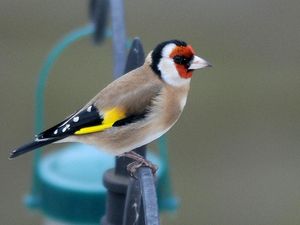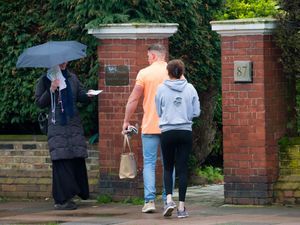Life on the inside: 10 birds to spot from your window
Take time to appreciate the joy of nature despite the constraints of the coronavirus restrictions.

Eerily quiet streets and skies across Britain during lockdown mean the sound of birdsong is filling our towns and cities.
Despite the constraints on getting out and about to enjoy nature, there are still plenty of birds that can be spotted from your window, in a garden or while taking your daily exercise.
Here is a guide to the 10 most common birds recorded in this year’s RSPB Big Garden Birdwatch – you may be surprised how many you can see without leaving your home.
1. House sparrow

This sociable, noisy bird remains the most commonly recorded visitor to gardens but its numbers have plummeted from the days when huge flocks were an everyday sight in cities.
The population of house sparrows across the UK fell by 71% between 1977 and 2008, although there have been recent increases in Scotland, Wales and Northern Ireland.
2. Starling
Easy to dismiss as a drab black or dark brown bird, in the right light the starling’s plumage is an iridescent purple or green with white flecks.
Although large groups of birds can be seen in parks or gardens, starlings are at their most spectacular when huge flocks gather at winter roosting grounds and perform a murmuration, where thousands form shifting shapes in the sky before settling down for the evening.
3. Blue tit

A small, dainty bird, the blue tit’s plumage is a colourful mix of blue, yellow, white and green.
Its blue crest and diminutive size differentiate it from the larger great tit.
4. Wood pigeon
The UK’s largest and most common pigeon, it is largely grey with a pinkish chest and white neck patch and has a distinctive coo-ing call.
The wood pigeon may look plump and dumpy on the ground but is capable of fast, powerful flight.
5. Blackbird

One of the easiest birds to identify, the male blackbird has – unsurprisingly – black plumage and a distinctive orange-yellow beak and a ring around its eye. Confusingly, female blackbirds are brown.
They have a melodic song, a snippet of which can be heard at the end of Blackbird by The Beatles.
6. Goldfinch
Characterised by a bright red face and a yellow wing patch, the goldfinch is another bird with a melodious song.
They can often be seen on garden bird feeders, particularly if there is niger seed on offer.
7. Great tit
Mainly green and yellow with a black cap, at around 5.5in (14cm) long the great tit is noticeably larger than its blue tit cousin.
A frequent visitor to gardens, it will scare off smaller birds when it appears at a feeder.
8. Robin

The red-breasted robin won the title of the UK’s national bird in a 2015 poll, cementing its place in the nation’s affections.
Despite its jaunty appearance and melodious song, robins can be vicious and have been known to peck rivals to death if they stray on to their territory.
9. Long-tailed tit
Resembling a flying lollipop with a tiny body smaller than its tail, the long-tailed tit is a beautiful bird with a mix of black, white and pinkish-purple feathers.
During the breeding season it builds a nest of moss woven together with spiders’ webs, and in winter large groups of the small birds will huddle together for warmth when they roost.
10. Magpie
Another easy-to-identify bird, although it initially appears to be simply black and white, the darker wing feathers have a purple sheen, while those on the tail have a greenish hue.
Members of the crow family, magpies are highly intelligent and – apart from pet cats – are one of the main threats faced by garden birds as they will eat eggs and chicks.




